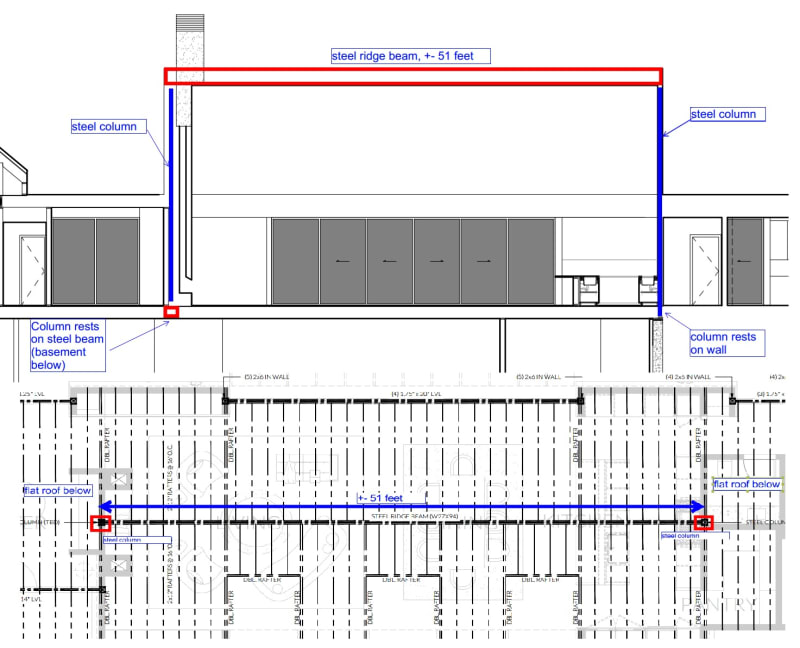For a cathedral ceiling like this, I don't think a large steel ridge beam like this is necessarily a bad solution. I suppose a 4-piece steel portal frame is another option, but that seems like more work overall. Still, not a bad idea. If I was concerned that the cost could be an issue for the owner, I would try to alert them of that early on. Other options are scarce: adding columns, adding a flat ceiling, or some strategically placed trusses (which usually look fine and don't really affect the open space). Personally, I think 6 exposed wood trusses at the double rafter locations would look cool, but then again I'm not the architect or owner.
I wouldn't be worried about the thrust due to 1" of deflection in the beam. Perhaps a slight camber could be beneficial to help a little with that.
I also wouldn't be worried about lateral bracing of the top of the beam as long as rafters are framing into it (which they must be). If there will be net uplift, then perhaps there should be some bottom flange bracing, but it shouldn't be a big deal because they'll probably need framing at the bottom of the beam anyway to create a short section of flat ceiling at the top.
Personally, unless I knew who the builder was going to be for the project, I would just assume that somebody competent will be constructing the project. Some residential builders are entirely comfortable using steel, others will avoid it and refuse the job, others will take the job and sub the steel erection to somebody else, and yet others will screw up the whole thing somehow, like using a 2-ply LVL in place of a massive steel beam like this.
How the steel is erected shouldn't really be your concern, although I suppose a shear plate connection might offer better stability during erection. In that case, you might want to include some eccentricity in the column design (another common discussion here).

